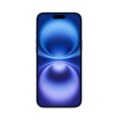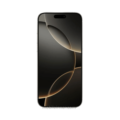- Home
- All Phones
- NOTHING
- Nothing Phone (2a)
Nothing Phone (2a)
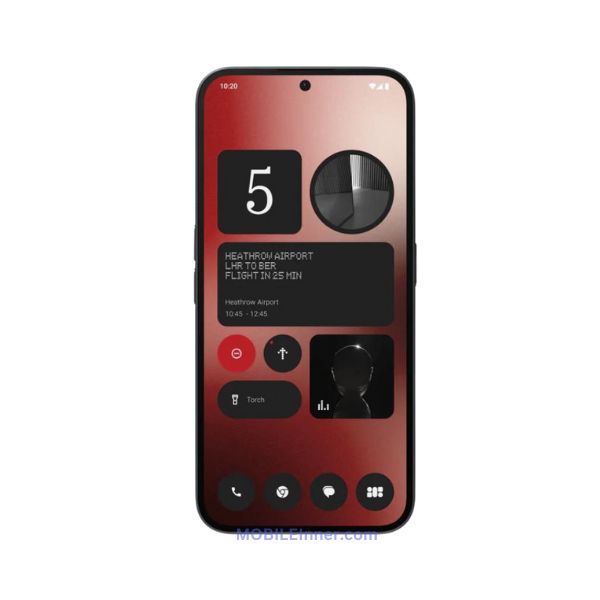

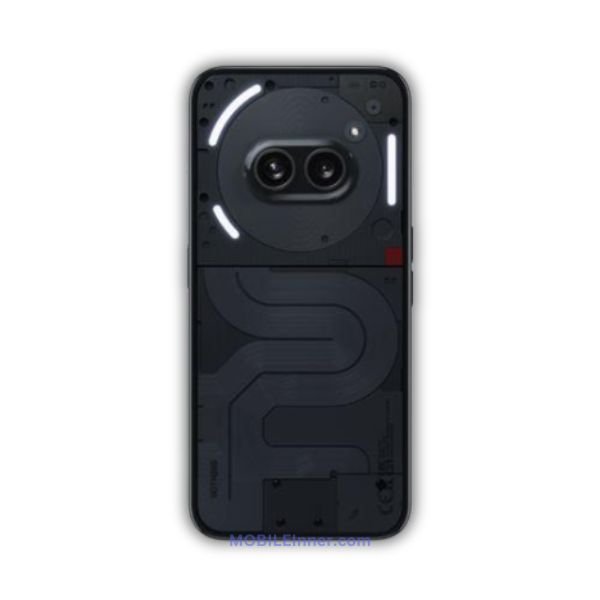
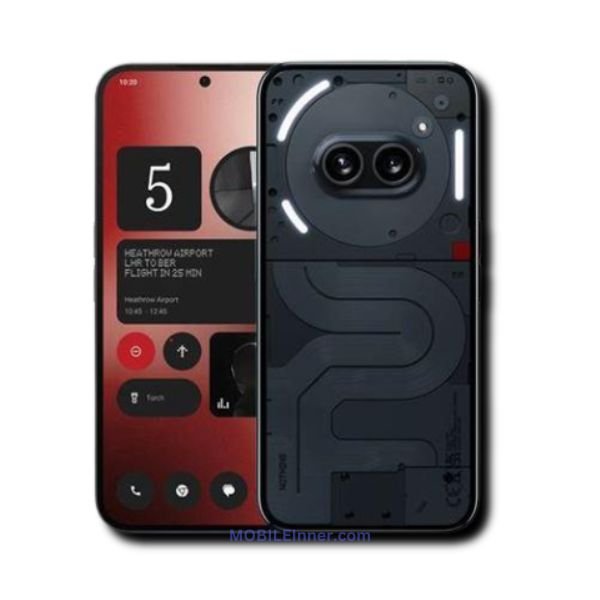
Full specification
General
| Device Type | Smart Phone |
| Model | A142 |
| Released | 12, March 2024 |
Design
| Dimensions | 161.7 x 76.3 x 8.6 mm |
| Weight | 190 g |
| Build | Glass front, glass back, plastic frame |
| IP Rating | IP54 |
| Colors | Black, White, Milk |
Display
| Display Type Display Technology => A number of display technologies and types used in mobile phones => TFT (Thin Film Transistor), IPS (In-Place Switching), OLED (Organic Light Emitting Diode), AMOLED (Active-Matrix Organic Light-Emitting Diode), Super AMOLED (an even advanced version of AMOLED), Resistive Touchscreen (Resistive touchscreens contain two layer of conductive material with a very small gap between them which acts as a resistance), Capacitive Touchsceen (Capacitive touchscreen technology consists of a layer of glass coated with a transparent conductor) | AMOLED, 120Hz |
| Size | 6.7 inches |
| Resolution | FHD+, 1080 x 2412 pixels |
| Pixel Density Pixel Density (PPI) is refers to the concentration of pixels on a particular display, measured in pixels per inch (ppi). Pixel density is calculated by dividing the diagonal pixel resolution of a display by its diagonal size, higher pixel density better display quality. | 394 ppi |
| Protection Display Protection => Gorilla Glass is a special alkali-aluminosilicate glass shield with exceptional damage resistance that helps protect mobile displays from scratches, drops, and bumps of everyday use, It is always better to go for a smartphone with Gorilla Glass for that added protection and peace of mind. | Corning Gorilla Glass 5 |
| Features | 87.6% screen-to-body ratio, Always-On display, 120Hz, 20:9 ratio, Hole-punch Notch, HDR10+, Max brightness HBM - 1100 nits, Peak brightness - 1300 |
Software
| OS OS => Every computer system run on a base software called Operating System (OS). Operating System controls all basic operations of the computer (such as smartphone, PDAs, tablet computers and other handheld devices). The Operating System allows the user to install and run third party applications (apps), apps are used to add new functionality to the device. | Android 14 |
| UI UI or user interface of a device is the look and feel of the on-screen menu system. How it works, its color scheme, how it responds to button presses, all of these things are part of the user interface. | Nothing OS 2.5.3 |
Hardware
| Chipset Chipset is a group of integrated circuits designed to perform one or a more dedicated functions, often with real time computing constraints, Popular smartphones are equipped with more advanced embedded chipsets that can do many different tasks depending on their programming. | Mediatek Dimensity 7200 Pro (4 nm) |
| CPU CPU (Central Processing Unit) mostly known as processors, CPU processes instructions in order to carry out certain functions that make your device operate properly. Processors are often described as the brain of computers, smartphones and tablets, Smartphones and tablets rely on processors to carry out their every task, Processors are an incredibly important factor in selecting any type of computing device, including your smartphone. |
8-core (2x Cortex-A715 • 2.8 GHz + 6x Cortex-A510 • 2.0 GHz) |
| GPU GPU (Graphics Processing Unit) is a single-chip processor designed to rapidly manipulate and alter memory to accelerate the creation of images in a frame buffer intended for output to a display, This includes things such as lighting effects, object transformations, and 3D motion. | Mali-G610 MC4 |
Memory
| Card Slot Memory Card Slot is a special slot for inserting a memory card. Memory cards allow you to expand the phone's built-in memory, A memory card (sometimes called a flash memory card or a storage card) is a small storage medium used to store data such as text, pictures, audio, and video, for use on small, portable or remote computing devices such as mobile phones, mp3 players, digital cameras. | No |
| RAM RAM (Random Access Memory) is a type of computer memory that can be accessed randomly, any byte of memory can be accessed without touching the preceding bytes that allows information to be stored and accessed quickly from random locations. RAM is the most common type of memory found in computer systems, smartphones, tablets and other electronic devices. | 8 GB, 12 GB |
| RAM Type | LPDDR4X |
| ROM Internal Storage is a data storage space (flash memory) mostly used in smartphones, tablets and other electronic devices where operating system, apps, music, photos, videos, files and other user data Is stored. | 128GB, 256GB |
| Type Design Type called form factor refers to a mobile phone's size, shape, and style as well as the layout and position of major components of phone. There are three major form factors seen in mobile phones => bar phones, folding phones and sliding phones. | UFS 2.2 |
Camera
| Primary Camera is able to capture photographs and usually videos, The most important characteristics of a camera are the resolution (measured in megapixels), lens focus type (fixed or automatic), higher megapixel cameras are known to capture higher quality photos, but not always a good measurement of the photos quality. |
Dual Camera 50 MP, f/1.9, (wide) PDAF, OIS (Sensor - Sony IMX890, Sensor size - 1/1.56, Pixel size - 1.00µm) 50 MP, f/2.2, 114˚ (ultrawide) (Sensor - Samsung S5KJN1, Sensor size - 1/2.76, Pixel size - 0.64µm) |
| Video |
4K@30fps, 1080p@60/120fps, gyro-EIS |
| Features | LED flash, panorama, HDR |
| Selfie |
32 MP, f/2.2, (wide) (Sensor - Sony IMX615, Sensor size -1/2.74, Pixel size - 0.80µm) |
| Video | 1080p@30fps |
| Features | HDR |
Media
| FM Radio | No |
| Loudspeaker | Yes, Stereo speakers |
| 3.5mm Jack | No |
| Alert Types | Vibration & Ringtone |
Connectivity
| Bluetooth Bluetooth is a wireless communications technology for exchanging data between mobile phones, headsets, computers and other network devices over short distances without wires, Bluetooth technology was primarily designed to support simple wireless networking of personal consumer devices. | 5.3, A2DP, LE |
| Wi-fi Wi-Fi is a popular wireless networking technology using radio waves to provide high-speed network connections that allows devices to communicate without cords or cables, Wi-Fi is increasingly becoming the preferred mode of internet connectivity all over the world. | Wi-Fi Direct, Wi-Fi 802.11 a/b/g/n/ac/6, Dual-band |
| Wi-fi Hotspot | |
| USB | USB Type-C 2.0, OTG |
| GPS GPS The Global Positioning System is a satellite-based radio navigation system, GPS permits users to determine their position, velocity and the time 24 hours a day, in all weather, anywhere in the world, In order to locate your position, your device or GPS receiver must have a clear view of the sky. | Yes- GPS, GALILEO, GLONASS, QZSS, BDS |
| NFC NFC (Near field communication) is a set of standards for smartphones and similar devices to establish peer-to-peer radio communications with each other by touching them together or bringing them into proximity, usually no more than a few inches. | |
| Infrared Infrared connectivity is an old wireless technology used to connect two electronic devices. It uses a beam of infrared light to transmit information and so requires direct line of sight and operates only at close range. |
Features
| Sensors Sensors are electronic components that detects and responds to some type of input from the physical environment. The specific input could be light, heat, motion, moisture, pressure and location, The output is generally a signal that is converted to use in computing systems, a location sensor, such as a GPS receiver is able to detect current location of your electronic device. |
Fingerprint (under display, optical), accelerometer, gyro, proximity, compass 3 LED lights on the back (notifications, camera fill light) |
Network
| Technology | GSM / HSPA / LTE / 5G |
| 2G Network | GSM 850 / 900 / 1800 / 1900 |
| 3G Network | HSDPA 800 / 850 / 900 / 1700(AWS) / 1900 / 2100 |
| 4G Network | B1, 3, 4, 5, 7, 8, 18, 19, 20, 26, 28, 38, 39, 40, 41, 42, 66 |
| 5G Network | n1, 3, 5, 7, 8, 20, 28, 38, 40, 41, 66, 77, 78 SA/NSA |
| SIM SIM (Subscriber Identity Module) is a small card that contains mobile network subscriber's account information. This allows the phone using the card to attach to a mobile network. The SIM card is most commonly associated with GSM and UMTS mobile networks. Moving a SIM card from one phone to another allows a subscriber to switch mobile phones without having to contact their mobile network carrier. SIM cards can also be used by a phone to store limited amounts of data, such as phone numbers and text messages. | Nano SIM |
| Dual SIM | Yes - Dual stand-by |
| Speed | HSPA 42.2/5.76 Mbps, LTE-A, 5G |
Battery
| Battery Type Battery Type => Cell phones run on various kinds of batteries depending on the manufacturer, phone size or shape and features. There are basically four types of cell phone batteries => Lithium Polymer, Lithium Ion, Nickel Metal Hydride and Nickel Cadmium. | Li-Ion (Lithium Ion) |
| Capacity Battery Capacity is a measure (typically in Amp-hr) of the charge stored by the battery, and is determined by the mass of active material contained in the battery. The battery capacity represents the maximum amount of energy that can be extracted from the battery under certain conditions. | 5000 mAh |
| Charging | 45W wired, Fast charging |
| Wireless Wireless Charging (Inductive Charging) uses an electromagnetic field to transfer energy between two objects. This is usually done with a charging station. Energy is sent through an inductive coupling to an electrical device, which can then use that energy to charge batteries or run the device. | No |
| Placement | Non removable |
| Standby Standby Time is the total amount of time that you can leave your is fully charged, turned on and ready to send and receive calls or data transmissions before completely discharging the battery. | NA |
Nothing Phone (2a) Overview
Following the intriguing debut of the Nothing Phone (2), the company returns in 2024 with the exciting Nothing Phone (2a). This mid-range smartphone retains the brand’s signature transparent design aesthetic while packing a powerful punch in performance and camera capabilities. Let’s delve deeper and see what the Nothing Phone (2a) brings for tech enthusiasts seeking a unique and feature-rich experience.
The Nothing Phone (2a) doesn’t shy away from standing out. It maintains the captivating transparent back, offering a glimpse into the phone’s internal workings. This time, however, the design goes a step further. Gone is the singular camera module layout. Instead, the Nothing Phone (2a) boasts a sophisticated dual-camera setup within the transparent rear panel, flanked by three customizable LED notification lights. This unique approach adds a touch of personalization and reinforces the phone’s futuristic look.
The Nothing Phone (2a) boasts a large, 6.7-inch AMOLED display with a smooth 120Hz refresh rate. This translates to ultra-responsive scrolling, fluid animations, and a visually stunning experience, whether gaming, browsing the web, or watching your favorite shows. With a peak brightness of 1300 nits, the display ensures excellent readability even under harsh sunlight. Additionally, Corning Gorilla Glass 5 protects against scratches and accidental drops.
The Nothing Phone (2a) is equipped with the MediaTek Dimensity 7200 Pro processor, a powerful chipset built on a 4nm process. This translates to efficient performance for everyday tasks and even demanding applications. Whether multitasking between apps, streaming high-resolution content, or playing graphics-intensive games, the Nothing Phone (2a) promises a smooth and lag-free experience. Accompanying the processor is 8GB or 12GB RAM, ensuring seamless app switching and multitasking capabilities. Storage options include 128GB and 256GB, providing ample space for your apps, games, photos, and videos.
The Nothing Phone (2a) sports a dual-camera system on the back. The primary sensor is a massive 50MP Sony IMX890, offering exceptional image quality with sharp details and vibrant colors. Accompanying it is a 50MP ultrawide sensor with a 114-degree field of view, perfect for capturing expansive landscapes or group photos. The Nothing Phone (2a) can shoot videos in 4K resolution at 30fps, allowing you to record life’s moments in stunning detail. Flipping the phone over, you’ll find a 32MP selfie camera, ensuring you can capture high-resolution selfies and participate in flawless video calls.
The Nothing Phone (2a) is equipped with a sizable 5000mAh battery, offering ample power to get you through a full day of use on a single charge. Whether you’re a social media enthusiast, a mobile gamer, or a casual user, the battery promises to keep up with your demands. When it’s time to recharge, the phone supports 45W fast charging, letting you quickly top up your battery and get back on track.
The Nothing Phone (2a) runs Android 14 with Nothing OS 2.5.3. This custom user interface delivers a clean and clutter-free experience, staying true to the brand’s philosophy of minimalism. With the latest Android 14 update, you can access all the newest features and functionalities Google offers.
Nothing Phone (2a) Pros and Cons
User Reviews
Disclaimer Note
We cannot guarantee that the information on this page is entirely 100% accurate.





